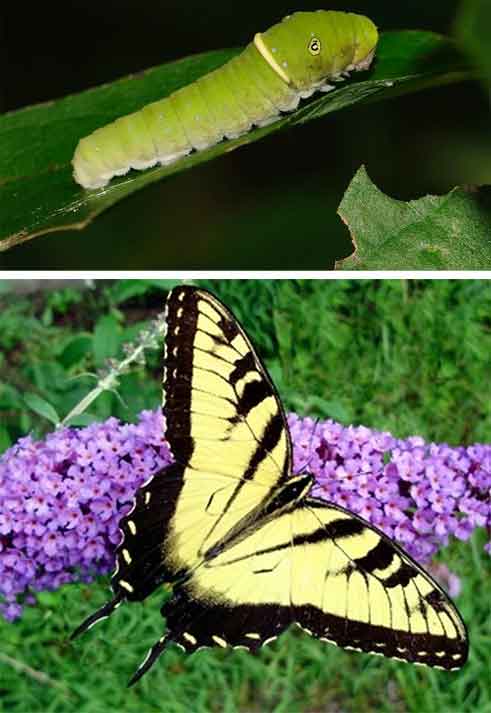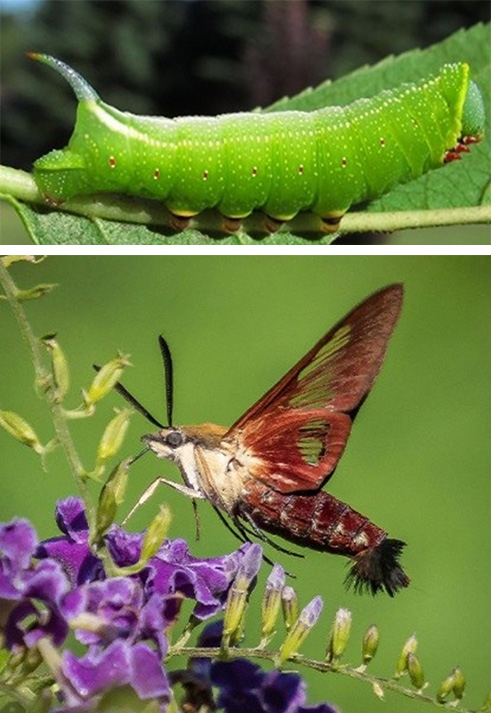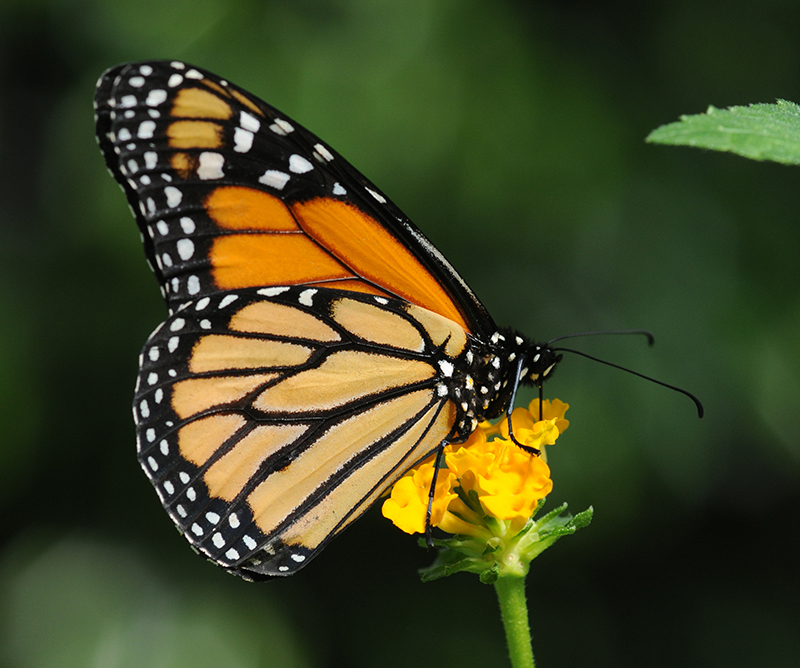By Kathy Torres

Have you ever witnessed the process of a caterpillar changing into a butterfly? Known as “metamorphosis,” it is nothing short of amazing to observe. We all learned about it in science class, but in case you’ve forgotten, there are 4 stages… egg, larva, pupa, and adult. The larva stage is the caterpillar. This little critter builds a cocoon or chrysalis around its body and eventually busts out as a beautiful butterfly or moth. Sounds perfect, yes? Well unfortunately, the caterpillar chows down on the host plant in order to continue through this process. It’s still amazing to watch, however, there is some sacrifice involved. Because the end result is a useful pollinator, it becomes a puzzle as to whether or not the caterpillar is welcome or discouraged in the garden. (Pictured to right Eastern Tiger Swallowtail Caterpillar and Butterfly).
Caterpillars can damage foliage significantly and very quickly. There are numerous varieties that plague the garden, but are they all BAD? If you want to encourage the “end result” in the metamorphosis process, should all these little guys be considered pests? Consider the Monarch Butterfly or the Hummingbird Moth. Both are a welcome site to behold and both can be useful. While researching these and other questions, like “how can I tell the good ones from the harmful ones,” I came across an article/blog that lays it out perfectly…with photos.
 Brie Arthur writes on the topic, Are Caterpillars Pests or Pollinators? You Might Be Surprised. A best-selling author, nationally recognized speaker and horticulturist, you can learn more about Brie HERE. I think the typical response to finding caterpillars in the garden is to get rid of them. After reading this article, you may reconsider, at least when it comes to the good caterpillars. Use of native plants in the landscape presents an option, or growing fennel, milkweed and/or passion vine to provide a food source for caterpillars that become pollinators, is a consideration that is organic and good for the environment. (Pictured left Hummingbird Clearwing Caterpillar and Moth).
Brie Arthur writes on the topic, Are Caterpillars Pests or Pollinators? You Might Be Surprised. A best-selling author, nationally recognized speaker and horticulturist, you can learn more about Brie HERE. I think the typical response to finding caterpillars in the garden is to get rid of them. After reading this article, you may reconsider, at least when it comes to the good caterpillars. Use of native plants in the landscape presents an option, or growing fennel, milkweed and/or passion vine to provide a food source for caterpillars that become pollinators, is a consideration that is organic and good for the environment. (Pictured left Hummingbird Clearwing Caterpillar and Moth).
If you are interested in learning more, you can check out the article HERE.
If you need help identifying a caterpillar found in your landscape, contact the Lexington County Extension Office, (803.359.8515) or go to 67 Types of Caterpillars (with Pictures): Identification Guide online. If you have an iPhone, go to the App Store and download this free App… Caterpillar Identifier.
Instead of trying to eliminate every caterpillar that you find in the garden, think about the possibility of living in harmony so you can enjoy the final stage of the metamorphosis process. Who doesn’t love to see a Monarch spreading its colorful wings in flight on a sunny day in August?


